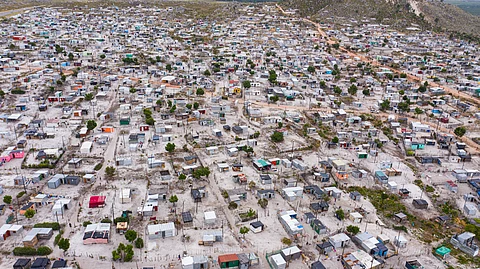

The world’s rural population might be far larger than previously thought. A new study published in the journal Nature Communications has revealed that global datasets have significantly underestimated the number of people living in rural areas — by as much as 83.8 per cent in some cases — raising concerns about inaccurate policy decisions and resource allocation.
While global estimates put the human population at 8.2 billion, the study by researchers from Aalto University in Finland suggests this figure may be significantly underestimated due to the under-representation of rural populations.
The research found discrepancies in the five major global population datasets — WorldPop, Gridded Population of the World or GWP, Global Rural-Urban Mapping Project (GRUMP), LandScan and Global Human Settlement Population Grid (GHS-POP) — with negative biases of 53.4 per cent, 65 per cent, 66.9 per cent, 68.4 per cent and 83.8 per cent respectively.
These grid datasets are widely used in studies, policymaking and sustainable development initiatives. The research, however, highlighted how “systematic under-representation of rural population directly propagated into their results.”
For instance, it noted that studies that mapped the potential impacts of disasters on population or analysis of healthcare accessibility have likely underestimated the population in rural areas, which might have resulted in an unequitable distribution of risk reduction efforts or an insufficient development of healthcare services in rural areas.
The study, published on March 18, 2025, said that the main cause of underestimation lied in the key input data — the national population censuses.
“... given that national population censuses are the key input for population models, our results suggest that the incompleteness of censuses in rural areas is a more serious issue than previously acknowledged,” the study said.
The researchers attributed the inaccuracies to the grid-based method typically used to estimate populations. This approach divides the world into grid-based cells using census data, but the data is primarily calibrated for urban environments rather than rural settings.
To gauge the extent of underestimation, the researchers analysed human resettlement data from 307 large dam construction projects across 35 countries. This data, they said, provided a multi-national reference independent of population censuses.
The analysis, covering the period from 1975 to 2010, used reported resettlement numbers and reservoir surface polygons from dam construction projects.
“The resettlement numbers were reported by national dam authorities and mostly stem from comprehensive on-the-ground impact assessments carried out during the planning and construction phase of the dam projects. The reservoir polygons usually derived from satellite imagery, represent the areas inundated upon completion of the dams and thus provide the spatial extents from which the reported number of people were displaced,” the study said.
The study found that while accuracy improved slightly over time, even the 2010 datasets still missed between one-third (32 per cent) and three-quarters (77 per cent) of rural residents.
Discrepancies in rural population data were particularly evident in China, Brazil, Australia, Poland and Colombia, where more independent data was available for comparison.
The study, by Josias Láng-Ritter, Marko Keskinen and Henrikki Tenkanen from Aalto University, recommended improving dataset accuracy in rural areas by strengthening population censuses, incorporating alternative population counts and ensuring a more balanced calibration of population models.